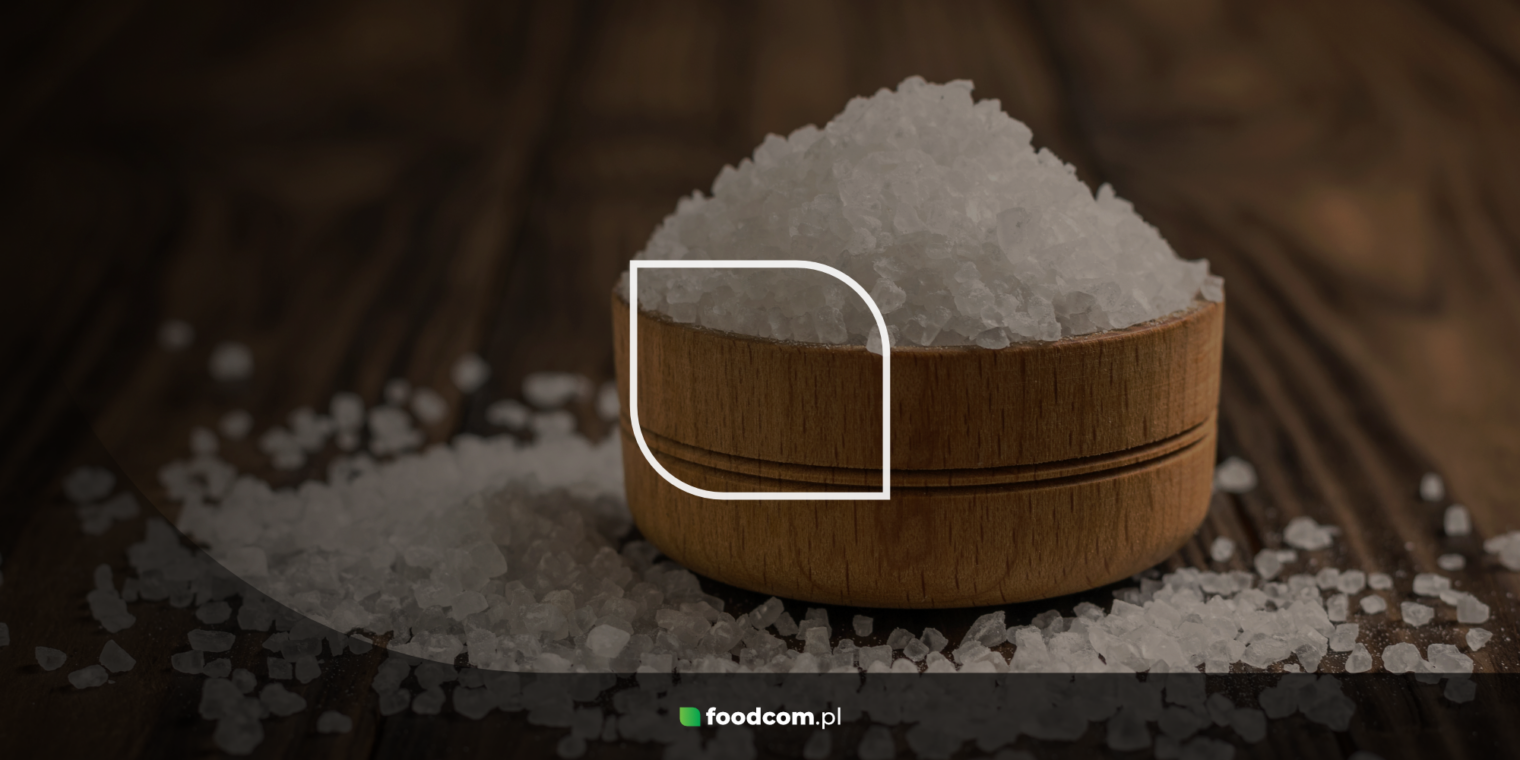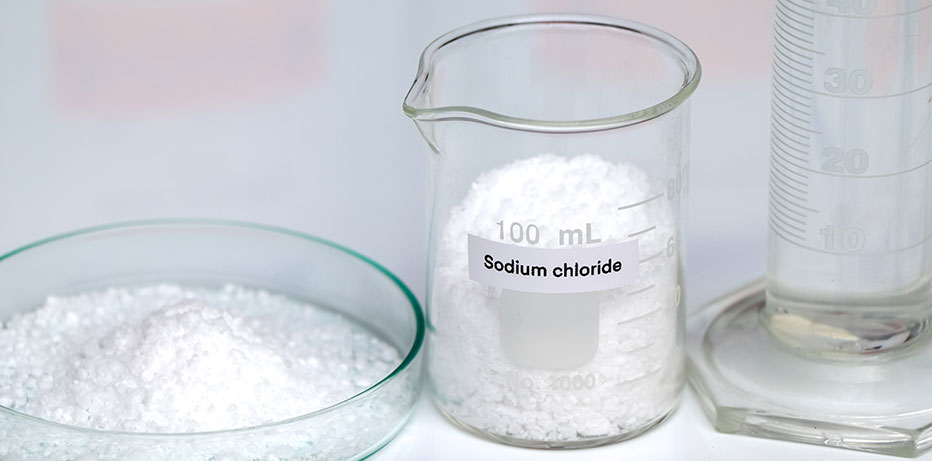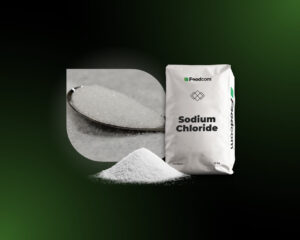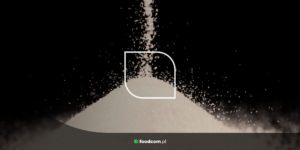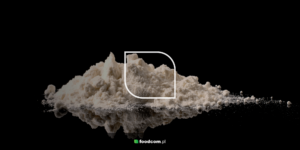- Sodium chloride is best known for its content in table salt.
- This compound is extracted from rock salt deposits or salt water.
- Sodium chloride has many uses: in the food industry, cosmetics, chemical industry, in medicine and in the production of glass, leather or in the road industry.
- Table salt provides the body with the sodium and chloride ions it needs to function, and often also iodine.
Sodium chloride is one substance that is essential for the survival of living beings. Consumption of sodium chloride provides the body with Na+ ions, which have a significant effect on the course of many physiological processes, and Cl+ ions. Sodium chloride is also used as table salt to season food. It also has many other uses, including being used in medicine, the glass and tanning industry and the cosmetics industry. The following article will introduce you to what sodium chloride is and its uses.
What is sodium chloride?
Sodium chloride is an inorganic chemical compound from the chloride group – a salt of hydrochloric acid and sodium. It has the chemical formula NaCl. It is the primary ingredient in table salt, brewed salt and road salt. It occurs naturally in nature as a mineral forming rock salt deposits called halites. Sodium chloride provides the body with the ions necessary for its functioning, has a hydrating effect, maintaining the electrolytic balance of body fluids, proper blood pressure and the proper functioning of the nervous system.
Physical and chemical properties of sodium chloride
Sodium chloride occurs as a solid. It takes the form of a fine crystalline white powder, with a characteristic salty odor and taste. It is often described as odorless. The salt’s properties are highly hygroscopic. Its solubility in water at 20°C is high at 358 g/l, while its solubility in ethanol is poor – in a medium at 25°C it is 0.51 g/l. However, it dissolves well in glycerol and ethylene glycol. The melting point of sodium chloride is 801°C, and the boiling point is 1413-1465°C. The pH of a sodium chloride solution is about 7 for a 1% aqueous solution at 25°C, while the pH of a 5% aqueous solution is 8-9. The molar mass of the compound is 58.44 g/mol, and the density is about 2.17 g/cm3. Properly stored sodium chloride has no expiration date. The product should be stored in clean, dry and airtight containers. Foodcom store offers the best quality food grade salt and brewed salt without anti-caking agent.
Occurrence of rock salt
Sodium chloride naturally occurs in dissolved form in sea water and mineral waters, and as halite, a mineral that forms rock salt deposits. Rock salt can contain admixtures of sand, other chlorides or sulfates, as well as sulfur. Halite was formed by crystallization of sea water or salt lakes. It occurs naturally in arid climates. Rock salt is obtained mainly in Europe (Germany, France, the Netherlands, Poland), North America (USA, Canada, Mexico) and Asia (China, India). In Poland, rock salt deposits are found, among others, in Kujawy (Inowrocław, Ciechocinek), in Kłodawa located in Greater Poland, in Sieroszowice in Lower Silesia, in Wieliczka or Bochnia. Rock salt crystals can be gray, orange, blue or green in color. More than 4 million tons of rock salt are mined annually in Poland, and about 250 million tons worldwide.
Table salt market
On a daily basis, sodium chloride is encountered in the form of table salt or brewed salt. It is produced by purifying rock salt or concentrating salted waters to crystallize the salt. Rock salt contains 99.9% sodium chloride, plus other trace elements that are removed in the process. Rock salt has a bitter aftertaste, which is reduced to saltiness in the process of making table salt. Often, table salt is enriched in the compound iodine (iodized salt) due to frequent deficiencies of this element in the diet.
Uses of sodium chloride
Sodium chloride is used as a food additive, imparting a salty taste to processed foods. It also acts as a preservative. It is also used in medicine, cosmetics production, road construction, chemical, glass and tanning industries. Detailed properties and uses of salt are listed below.
Uses in medicine
Sodium chloride is widely used, among other things, in medicine. This use dates back as far as 1831. Preparations containing this chemical compound are especially recommended in situations of electrolyte deficiency and insufficient hydration of the body. In addition, it is an important ingredient in preparations used for eye, nose and throat rinses, as well as solutions used for injections, wound washing and inhalation. It is usually found in a solution of 0.9% sodium chloride, known as saline – this is the concentration found in the human body and in blood plasma. Sodium chloride is additionally used in veterinary medicine as a vomiting inducer.
Use in cosmetics
Sodium chloride is also valued by cosmetic manufacturers. In finished products, the compound has various functions. Among other things, it is used as a filler, increasing the volume of the product, and as a fragrance or to suppress other undesirable odors. It also causes an increase in product viscosity and helps stabilize emulsions. It is often used in shampoos or toothpastes, as well as in the manufacture of soaps and detergents.
Use in food production
Sodium chloride is widely used in the food industry. Salt is found in highly processed foods, in processed meats, as well as in butter, cheese and other dairy products, and in bread. Its role is mainly to enhance the flavor of products, but it also acts as a preservative, a binding agent, e.g. in sausages, an additive to control fermentation, e.g. in the production of cheese or bread dough, an enhancer of flavor, texture and product color, e.g. to color processed meat products. The preservative effect of salt, which has been known for many years, is to inhibit the growth of bacteria – microorganisms are unable to live in a salty environment, in addition, salt acts as a cheap and safe desiccant, which, thanks to its hygroscopicity, draws water out of bacterial cells. Therefore, the addition of salt extends the shelf life of products such as meat, fish and cabbage.
Industrial applications
Sodium chloride has a wide range of industrial applications:
- It is used in the chemical industry as a raw material for obtaining other compounds: hydrochloric acid, sodium hydroxide, sodium carbonate, sodium, chlorine, calcium chloride, sodium sulfate.
- Sodium chloride crystals are used in the construction of measuring apparatus, such as infrared absorption spectrophotometers, and are also used in optical components, such as prisms, operating in the infrared spectral range. This is because sodium chloride crystals have an optical transmittance of about 90% for infrared light.
- Sodium chloride is also encountered in the road industry as an agent for melting ice and snow, since a solution of water and sodium chloride freezes at very low temperatures (it is effective to use salt down to -10°C).
- Sodium chloride is also used in the glass industry – the sodium carbonate obtained from it is used to make glass, as well as dyes and other chemicals.
- The compound is also used in refrigeration, as it forms a cooling solution below -20°C when combined with ice.
- In oil and gas extraction, salt is used as an important ingredient in drilling fluids.
- In the construction industry, salt accelerates the hardening of concrete, and is also used to protect soil and provide stability for road foundations.
- In textiles and dyeing, salt rinse is used to separate organic impurities and dry out dye deposits.
- In the tanning industry, salt is used in the treatment of animal hides to inhibit microbial activity and prevent the leather from becoming too dry.
- Sodium chloride is also used in the production of rubber (buna, neoprene, white rubber) and ion-exchange resins for softening water.
- In the pulp and paper industry, it is used to extract chlorine dioxide, which is used to bleach wood pulp in paper production.
- In firefighting, sodium chloride is used as the main extinguishing agent in some fire extinguishers (Class D extinguishers used to extinguish flammable metal fires).
The use of salt in everyday life
Sodium chloride is encountered in everyday life as table salt. It is used to preserve food, we also use table salt to season our meals or to make solutions for gargles or inhalation in case of a cold. It is worth remembering that too much salt consumption can lead to the development of hypertension, among other things. The daily human requirement for salt is 5 g. In daily use, salt is also encountered as a cleaning agent for household surfaces. Sodium chloride for use in any area is offered by the Foodcom store.
